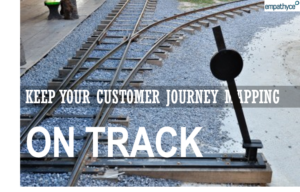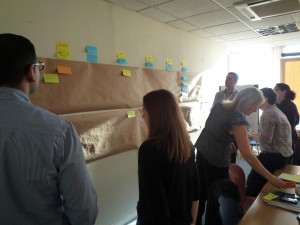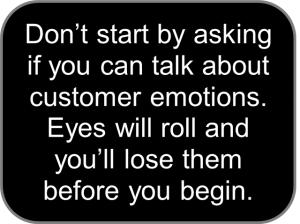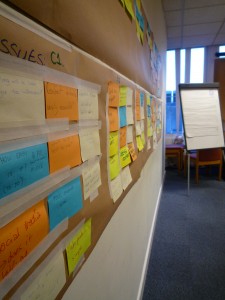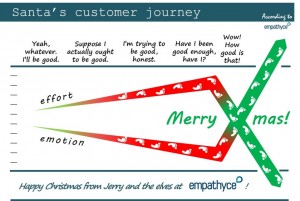Customer-centric cultures (or not, as the case may be)
Taking a Customer Experience perspective has a canny knack of revealing an organisation’s real culture.
A CX maturity exercise I ran for a well-known consumer brand unearthed a shock for the leadership team; contrary to the employee survey, pride in the brand was pretty much non-existent.
I sat down with a number of colleagues and asked what they’d say to someone who enquired where they worked. An unnerving amount of them told me they would rather say they were unemployed or make something up than reveal who they worked for.
The reason they were fielding so many costly calls from customers was that although the team had given plenty of feedback on what needs improving, it was never acted on. They didn’t have the tools or information to help customers, hand-off processes went into black holes and communications were confusing and inconsistent. They’d tried to get things fixed but everything was ‘in next year’s budget’ or not seen as a priority. They’d given up trying to change anything so the cost of failure demand was left to write its own invoices.
And the reason the employee survey was giving a false reading of ‘highly engaged’? The team ticked that box in the belief that the “right” answer would secure their end-of-year bonus. Some interesting conversations followed.
In stark contrast, this year I experienced an employee going not just “the extra mile” for me but, literally, several miles. It’s an often-used phrase with good intent but translating it into colleague behaviours is not easy.
Long story short, my flight from London to Amsterdam was subject to an 8-hour delay. So, it was getting on for midnight when I arrived at the airport’s railway station. I needed information on how to get to an unfamiliar suburb of the city for my conference. The airport’s taxi queue snaked into the night for miles and there was hardly anybody else around. Thankfully, on the platform was a friendly-looking guy in a Schiphol-branded high-visibility jacket.
He explained it wasn’t a straightforward journey to navigate and without hesitation he said he’d go with me to show me the way. I tried to insist that while it was very kind he didn’t need to do it. He was, after all as I found out later, on his way home in a different direction after a long operational shift.
A short train ride was followed by a walk across a park and then onto a bus for a few more stops to the hotel.
He got me there and he made it easy for me. I’ve lived and worked in cities around the world so am used to getting from A to B on my own but on that dark, wet night after long delays and feeling less than chipper, I was – and still am – so grateful.
His response to my gratitude has stuck with me ever since. As we parted ways he smiled and with a huge amount of pride simply said “We’re Schiphol. It’s what we do”.
With the help of Marcel Stroop of Schiphol’s brilliant innovation team, we tracked him down to make sure his ‘above and beyond’ actions were acknowledged.
I get it, that sort of thing doesn’t happen every day and is fairly extreme. But when we talk about employee pride and about “going the extra mile” for our customers, it reminds me that we should give it a stress-test to understand how genuine it is. Do actions mirror the words?
Even with the poster on the wall with its carefully-worded proclamations, would everyone – really – be willing to do something extra, however small it may be? Not every day, but when they feel it is right.
Or does the culture mean that in reality they dare not do anything outside their process-based remit for fear of recrimination by their manager? Do they think “Why bother?” or “We don’t have time for that”. Are they proud enough to wear your brand’s logo outside of work? Do they look at each other and shrug, assuming and hoping that someone else will do the extra bit?
It’s important stuff and a telling topic to discuss in your team meetings. What examples of good or bad cultures have they heard about or seen in their own experiences outside work? Should or could the same happen in your organisation and what are the lessons to learn?
Thank you Michel, Marcel and the Schiphol family for a memorable and thought-provoking experience!
As a Customer Experience practitioner and now CX consultant, Jerry Angrave supports leaders and managers who are driving forward their organisation’s Customer Experience programme.
He helps shape the thinking and plan the doing in a way that gives structure, influence and momentum to the CX activity.



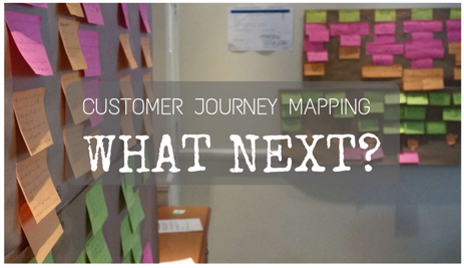
 CX consultant with an extensive corporate background and I also specialise in professional development for those in, or moving to, customer experience roles. Feel free to contact me with any questions – by email to
CX consultant with an extensive corporate background and I also specialise in professional development for those in, or moving to, customer experience roles. Feel free to contact me with any questions – by email to 